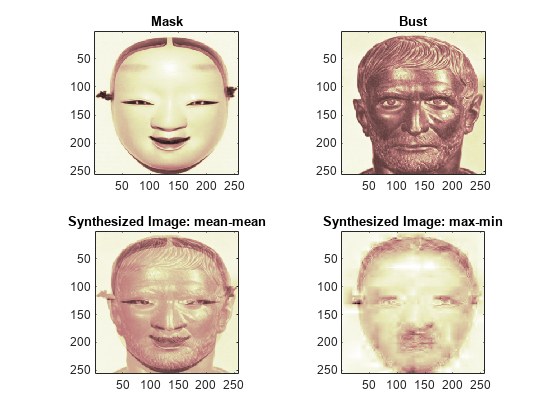wfusimg
Fusion of two images
Syntax
Description
The principle of image fusion using wavelets is to merge the wavelet decompositions of the two original images using fusion methods applied to approximations coefficients and details coefficients.
xfus = wfusimg(x1,x2,wname,level,afusmeth,dfusmeth)xfus obtained by fusion of the two original images
x1 and x2.
[
also returns three wavelet decomposition tree objects associated with xfus,txfus,tx1,tx2] = wfusimg(x1,x2,wname,level,afusmeth,dfusmeth)xfus,
x1, and x2, respectively.
[___] = wfusimg(___,'plot') plots the objects
txfus, tx1, and tx2. This
syntax can be used with any of the previous syntaxes.
Examples
Input Arguments
Output Arguments
References
[1] de Zeeuw, P. M. "Wavelet and image
fusion." CWI, Amsterdam, March 1998.
https://groups.google.com/d/msg/comp.soft-sys.matlab/AjqIENmx1Z4/5g7QDFrZvWMJ
[2] Li, H., B. S. Manjunath, and S. K. Mitra. "Multisensor Image Fusion Using the Wavelet Transform." Graphical Models and Image Processing. Volume 57, Issue 3, May 1995, pp. 235–245.
[3] Misiti, M., Y. Misiti, G. Oppenheim, and J.-M. Poggi. Les ondelettes et leurs applications. France: Hermes Science/Lavoisier, 2003.
Version History
Introduced before R2006a



